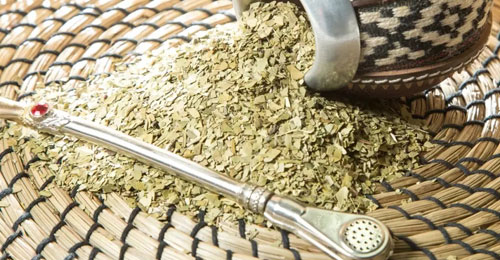
Exotic for many tea mate can easily become the most favorite drink that you want to return to in both summer and winter. The process of matepitiya is simple, but exciting. All you need to do is calabash and bombilla. If you do not have the necessary attributes, but have yerba mate, do not despair, but brew the mixture in a European way - in a teapot.
For South Americans & ndash; Paraguay, Uruguay, Argentina, Bolivia, Chile, an infusion of Paraguayan holly shoots is tea, for us this name is rather arbitrary. Rather, a tasty and aromatic tonic drink.
How is mate tea made?
Branched shrub holly Paraguayan in natural conditions reaches fifteen meters, and on specialized plantations two meters.
Every year it produces new shoots 30-50 cm long, which are cut together with the leaves.
These shoots go through a drying process at very high temperatures, completely changing their structure.
After on the crushing machine, the branches are crushed, producing a heterogeneous powder.
Mate, the local population has been using since the time of the Inca empire, and in Russia they learned about this outlandish tea only a couple of decades ago.
How do I make mate tea?
The mattepitiing process is simple but fun. & nbsp; It only takes calabash and bombilla.
Calabash used to be a semicircular low vessel of pumpkin, and calabash is now & ndash; this is a ceramic, glass or porcelain container. & nbsp; There are also clay ones, here they come closest to authentic material.
But initially calabash was made from a pumpkin-pot, whose top was cut off, the inner pulp was disposed of, and the base was thoroughly dried in the sun, and later steel was dried in an oven.
Matepithet & ndash; this is a ritual, so decorated dishes were an integral part of the ceremony. The dried form of the pumpkin was decorated with painted drawings, set in leather or silver, and inscriptions were cut out.
Mate tea can be purchased from our online store .
And we also have South African tea Roybush
To make mate, sevador (the person brewing mate) puts the crushed mixture into calabash for about 1/4 of the volume. Then the vessel is tilted to one side to pour all the brew and free part of the bottom, where heated water is poured.
You need a little liquid just to wet the whole brew.
After a couple of minutes, shake the swollen mixture, insert a bombilla tube into the calabash, and fill with water to the top.
Bombilla is specially designed for mate, so a flask-shaped strainer located on one edge does not let in brew particles, filtering the drink well. It rests on the very bottom, in the thick, and it is from there that a slightly tart tea stretches.
Water is of great importance for mate. To get a full taste of tea, it must be soft, better filtered. Water temperature & ndash; 75-85 degrees. Do not use boiling water, otherwise the drink will give off unpleasant bitterness.
Expert opinion
It is important to properly withstand the two-stage process of brewing yerba mate: first, the brew swells, and then it is completely filled with water.
One portion of brew can be used up to 7-9 times, simply adding warm water as the drink is consumed.

How do I make mate in a teapot?
If you do not have the necessary attributes, but have yerba mate, do not despair, but brew the mixture in a European way.
Put 5 tablespoons of mate in a kettle for 1 liter of water and fill with water.
After 4-5 minutes, pour the infusion into cups using a strainer to filter from the brew.
If you want to slightly change the taste of a classic mate, make a cold cocktail: pour three tablespoons of brew into a kettle, pour water at room temperature.
After 10 minutes, pour into glasses, with prepared mint leaves, vanilla pods, honey or fruit juice. Tonic, delicious, unusual.
All for material & ndash; yerba mate , kalabasy and bombili & ndash; offered in the online store & laquo; Russian Tea Company & raquo;.
All our products are original and high quality because they come directly from the manufacturer.
Buy mate tea from us and enjoy a tonic refreshing drink in a warm friendly company or family circle.
